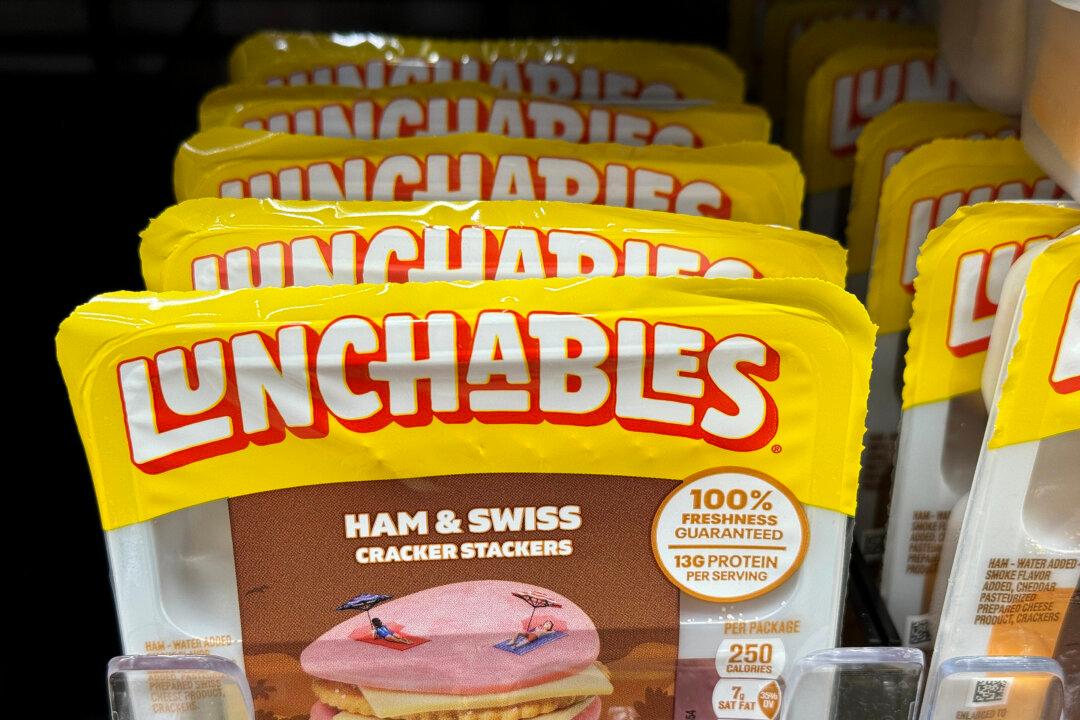On Tuesday, Consumer Reports called on the Department of Agriculture to remove the popular Lunchables food kits from the National School Lunch Program after tests revealed that they may not be the healthiest option.
“We don’t think anybody should regularly eat these products, and they definitely shouldn’t be considered a healthy school lunch,” said Eric Boring, Ph.D., a Consumer Reports chemist who led the testing.
Consumer Reports (CR) tested 12 different versions of Lunchables and similar kits sold through retailers and found that several contained troubling levels of lead and cadmium—albeit none exceeding any federal limit.
All but one kit also tested positive for phthalates—chemicals added to plastics to increase properties such as flexibility, transparency, durability, etc. Phthalates have been linked to reproductive problems, diabetes, and certain types of cancer.
Turkey & Cheddar Cracker Stackers and Extra Cheesy Pizza, the two snacks sold through the National School Lunch Program, were also found to contain troubling levels of sodium.
The results were sufficient for Consumer Reports to alert the United States Department of Agriculture (USDA) and urge the agency to remove Lunchable’s kits from the National School Lunch Program, which serves nearly 30 million children every day.
“Lunchables are not a healthy option for kids and shouldn’t be allowed on the menu as part of the National School Lunch Program,” said Brian Ronholm, director of food policy at Consumer Reports.
“The USDA should remove Lunchables from the National School Lunch Program and ensure that kids in schools have healthier options.”
The USDA currently allows two Lunchables kits—Turkey & Cheddar Cracker Stackers and Extra Cheesy Pizza—to be served through the National School Lunch Program.
To meet the program’s requirements, producer Kraft Heinz added more whole grains to the crackers and more protein to the Lunchable kits designed for schools compared to those sold in retail, Consumer Reports said.
“There’s a lot to be concerned about in these kits,” said Amy Keating, a registered dietitian at Consumer Reports. “They’re highly processed, and regularly eating processed meat, a main ingredient in many of these products, has been linked to increased risk of some cancers.”
“And they’re too high in sodium,” she added, “especially for kids.”
Multiple Brands
The consumer watchdog examined Lunchables and similar kits from Armour LunchMakers, Good & Gather, Greenfield Natural Meat Co., and Oscar Mayer—samples bought in retail—and found lead, cadmium, or both in all.Lead and cadmium are toxic metals that can cause developmental problems in children when ingested regularly—a risk that increases with exposure over time.
While none of the kits exceeded any federal limit, five of the 12 tested products would expose someone to 50 percent or more of California’s maximum permissible level for lead or cadmium—currently the most stringent standard.
Every kit also contained at least one type of phthalate, except for Lunchables Extra Cheesy Pizza, Consumer Reports said.
High Sodium Levels
Consumer Reports also found that the school lunch version of the snack kits contained more salt than the identical versions sold in retailers, which already contain nearly a quarter to half of the recommended sodium intake limit for children.“Do you think the school lunch versions might be better? Sorry: They have even more sodium than the store-bought versions,” Ms. Keating said.
Eating too much sodium can, over time, lead to high blood pressure, cardiovascular disease, stroke, and kidney damage.
Kids with high sodium intakes are about 40 percent more likely to develop hypertension than those who have low sodium diets, Consumer Reports said in its press release.
According to the CDC, about 1 in 25 youth ages 12 to 19 have hypertension, and 1 in 10 has elevated blood pressure or prehypertension.







